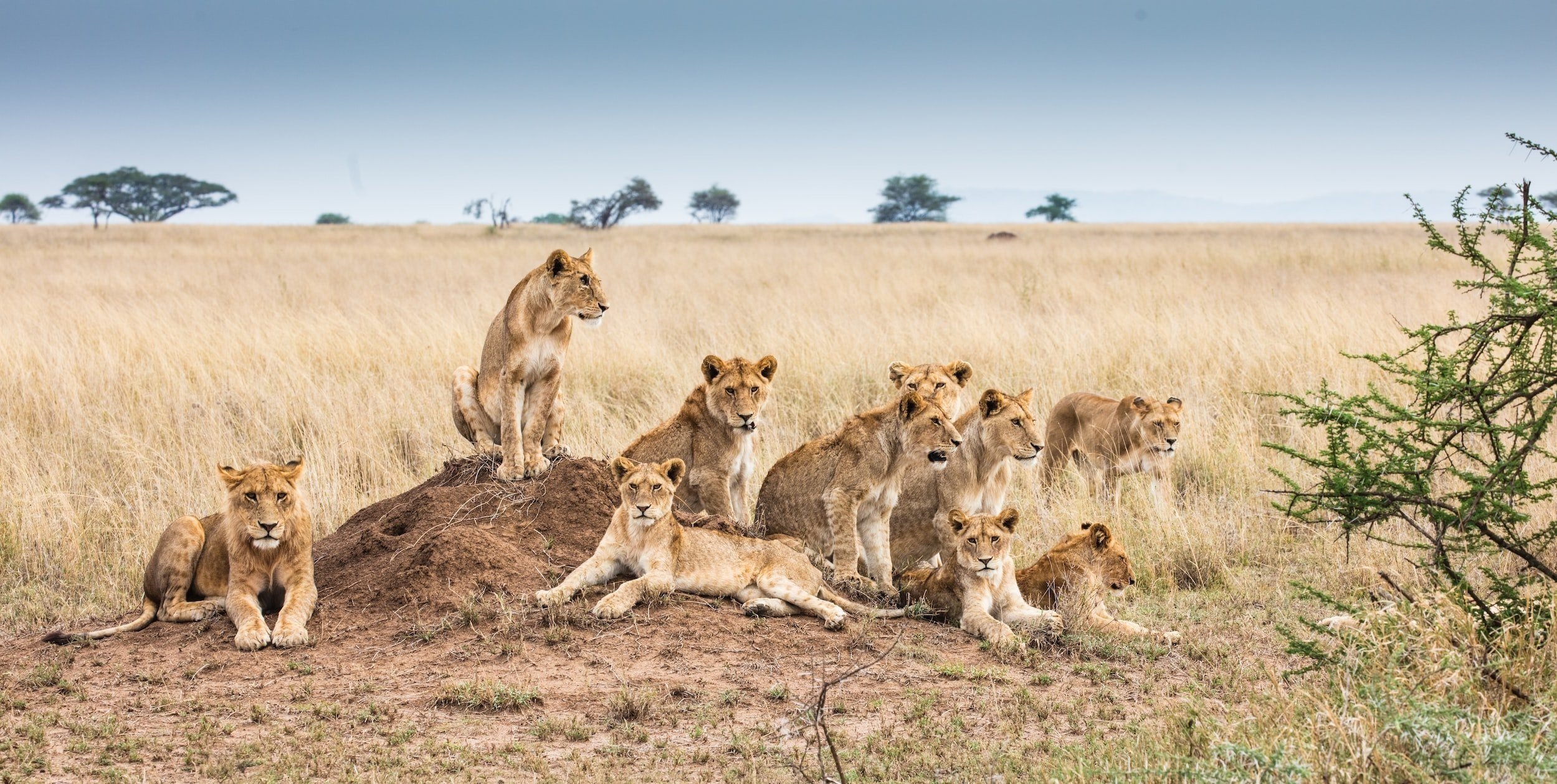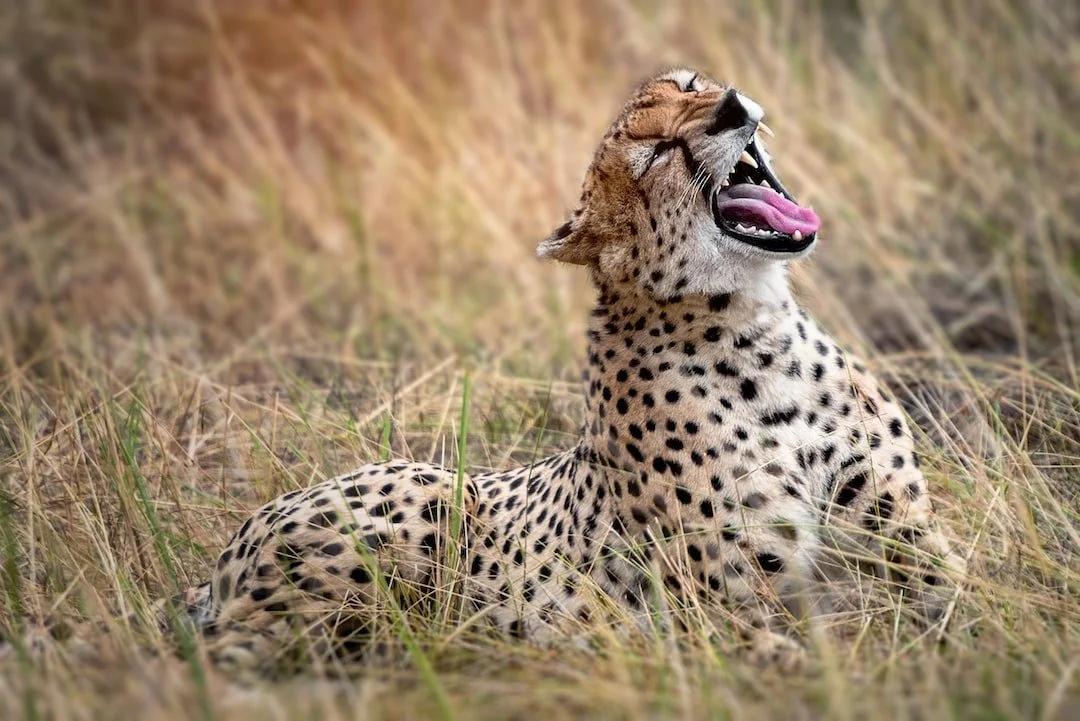
The Serengeti National Park
The Iconic African Safari Destination
The Serengeti is an iconic African savannah that stretches over 30,000 square kilometers and is home to some of the world's most extraordinary wildlife and natural wonders. Its vast grasslands, acacia woodlands, and riverine forests provide a habitat for the annual wildebeest migration, where millions of these magnificent animals cross the Mara River in search of new grazing lands. The Serengeti's diverse landscapes also support large populations of lions, elephants, giraffes, cheetahs, hyenas, and other beautiful animals. This park's name is not only a reflection of its endless plains but also its timeless beauty and unforgettable experiences that inspire a deep sense of wonder and appreciation for nature.
Areas of The Serengeti
-
The Seronera Valley is a picturesque region located in the heart of Tanzania's Serengeti National Park. It is known for its diverse wildlife, including large herds of elephants, buffalo, and giraffes, as well as predators such as lions, leopards, and cheetahs. The valley is also home to the Seronera River, which provides a vital source of water for the park's wildlife. Visitors to the Seronera Valley can enjoy guided game drives, hot air balloon rides, and other outdoor activities while taking in the stunning scenery and abundant wildlife.
-
The Western Corridor is a remote and fascinating region within the Serengeti National Park, known for its rugged terrain and incredible wildlife sightings. Unlike the more central Seronera Valley, the Western Corridor offers a more off-the-beaten-path safari experience. The area's Grumeti River is a vital water source, attracting an abundance of wildlife, including large herds of wildebeest and zebras, as well as predators such as lions, cheetahs, and hyenas. The Western Corridor is also an ideal location to witness the annual wildebeest migration, with fewer crowds and a more exclusive feel than other parts of the park. Visitors can embark on guided game drives, bush walks, and other outdoor activities while immersing themselves in the natural beauty and wildlife of this remote and captivating region.
-
The Northern Lobo and Kogatende Areas are located in the northernmost part of the Serengeti National Park, bordering Kenya's Masai Mara Game Reserve. These remote areas offer a unique and secluded safari experience, far from the crowds of the more popular regions. The landscape is characterized by rolling hills, open grasslands, and dense woodlands, providing a diverse habitat for a wide variety of wildlife, including elephants, lions, leopards, cheetahs, and hyenas. Visitors to the Northern Lobo and Kogatende Areas can also witness the annual wildebeest migration, which passes through this region between July and October, and includes dramatic river crossings and thrilling predator-prey interactions. Game drives, guided walks, and cultural visits to nearby Maasai villages are just some of the activities that visitors can enjoy in this remote and stunning part of the Serengeti.
-
The Southern Plains of the Serengeti National Park are a vast expanse of grasslands, stretching out as far as the eye can see. This region is home to a vast array of wildlife, including large herds of wildebeest and zebra, as well as predators such as lions, cheetahs, and hyenas. The area is also known for its striking rock formations, which provide a dramatic backdrop to the sweeping plains. Visitors to the Southern Plains can enjoy guided game drives and take in the incredible wildlife and natural beauty of this iconic African landscape. One of the highlights of this region is the chance to witness the calving season, where thousands of newborn wildebeest are born and learn to navigate the grasslands alongside their mothers. The Southern Plains offer a unique and unforgettable safari experience, showcasing the best of Tanzania's wildlife and natural beauty.
Why Visit The Serengeti?
All The Big Cats
The Serengeti is home to some of the world's most significant populations of big cats, including lions, leopards, and cheetahs. Lions are the most numerous and easiest to spot of the big cats in the park. They live in prides and can be seen lounging under trees or hunting in groups. Leopards are more elusive, preferring to live solitary lives and are mostly active at night. Cheetahs are the fastest land animals on earth and can be seen sprinting across the plains in pursuit of prey. The Serengeti is an excellent destination for anyone hoping to see these majestic animals in their natural habitats.
The Great Migration
The Great Migration in the Serengeti is one of the most spectacular natural phenomena in the world, where over two million wildebeest, zebras, and gazelles migrate from Tanzania's Serengeti to Kenya's Masai Mara in search of greener pastures. This epic journey spans over 1,800 miles and is filled with obstacles, including predators, crocodile-infested rivers, and harsh terrain. Witnessing this incredible wildlife spectacle is a once-in-a-lifetime experience that attracts visitors from all over the world to the Serengeti National Park. The migration typically takes place between June and November and attracts numerous predators such as lions, hyenas, and crocodiles, making it a remarkable display of nature's circle of life. It's a sight to behold and a must-see for any wildlife enthusiast.
Breathtaking Landscapes
The Serengeti is famous for its stunning landscapes that include vast plains, rocky outcrops, and rolling hills. The stunning scenery is a major draw for tourists, who come to witness the beauty of the African savannah firsthand. One of the most popular ways to experience the Serengeti's landscapes is by hot air balloon rides, which offer a bird's eye view of the park's diverse terrain. Tourists can watch the sunrise over the plains, see the wildlife from above, and appreciate the scale of the park's stunning vistas. Whether by air or on the ground, the Serengeti's landscapes are a treat for the senses, and a must-see for anyone visiting Tanzania.
When is Best to Visit The Serengeti?
-
This is the warm and wet season, with high rainfall and temperatures ranging from 25°C to 30°C (77°F to 86°F) during the day. This period is also known as the calving season as wildebeests and other grazers give birth to their young. It is an excellent time to witness the wildlife in lush green vegetation. .
-
The rainfall gradually decreases during this ‘transition’ period, with occasional showers and thunderstorms. The temperatures can range from 20°C to 25°C (68°F to 77°F) during the day, with cooler nights. As the grass begins to dry up, it becomes easier to spot wildlife.
-
This is the dry season, with sunny and clear skies. The daytime temperatures range from 25°C to 30°C (77°F to 86°F), with cooler nights. It is the best time for a safari as the animals tend to congregate gather around water sources. However, it can be crowded and more expensive.
-
This is the short rains season in the Serengeti. Temperatures range from 20°C to 25°C (68°F to 77°F) during the day, with cooler nights. The vegetation begins to grow, making it a beautiful time to visit the Serengeti. However, some areas may become inaccessible due to muddy and slippery roads.
Need More Inspiration?










